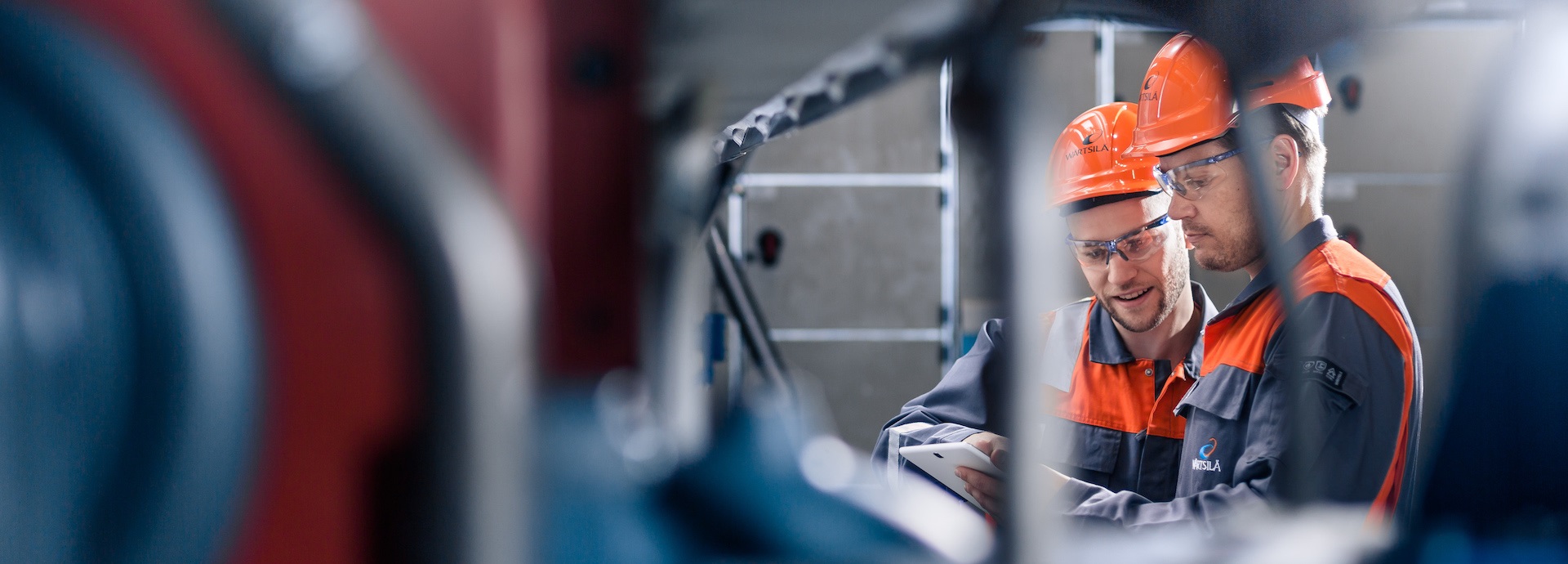

Wärtsilä’s Field Service delivery system used to be time-consuming and manually demanding on human resources. With nearly 3,000 field service professionals in 70 countries, finding the individual with the correct set of skills, checking availability, and booking them for the job catering to marine and energy industries was becoming a laborious exercise.
Oskar Söderlund, Senior Manager AI & Analytics, Field Services & Workshops (FSWS) Wärtsilä Marine Power, says, “We’d get a query for the repair or maintenance of a vessel and then reach out by email or phone to our teams around the world. Sometimes, due to no replies or not knowing whom to contact, an average case could take up to two weeks to solve, which is unacceptable for our customers.”
In a post-Covid world, long-distance travel has become less feasible for European teams, so Wärtsilä relies on worldwide field service teams to fulfil these requests. Marco Stefanello, Senior Manager, Demand & Supply Management, emphasises, “With the global situation still in turmoil, effectively dispatching Field Service engineers is crucial to maintain and grow our business.”
Wärtsilä needed an efficient service delivery model to cut times and costs. The solution was a digital system powered by AI that could effortlessly allocate resources.
This is quite a big leap compared to manually assigning Field Service engineers to jobs.
Big leap forward
Wärtsilä’s Smart Resource Allocation (SRA) tool significantly reduces the time needed to find and allocate human resources to meet customers’ needs effectively and efficiently.
While AI has been instrumental globally in increasing business efficiency, cutting costs and reducing processing times across manufacturing and service sectors, it helps search and match relevant skills by surveying historical problem-solving and resource allocation patterns.
Stefanello says, “This is quite a big leap compared to manually assigning Field Service engineers to jobs. Not only will automated capabilities make the process much more efficient, but it will enable us to serve our customers better.”
Söderlund explains that it was part of Wärtsilä’s strategic development plan to set up a resource-requesting tool: “This was to minimise human input or work hours and let an automated service do much of the work and therefore make our business more efficient.”
Requests for marine and energy fieldwork can come throughout the life cycle of a vessel, from commissioning, warranty, maintenance, and repair to Lifecycle Agreements and upgrade projects.
The system is designed to find the nearest, most technically relevant person to address, for example, the vessel’s repair or maintenance needs. When a fieldwork request comes in, a query is immediately generated, and the AI-powered system then searches the field service professional database. Once the team member accepts the request, they are booked, and the job is assigned.
Sometimes, due to no replies or not knowing whom to contact, an average case could take up to two weeks to solve, which is unacceptable for our customers.
Increased business efficiency
By digitising the process through AI, the processing time for resource allocation has drastically reduced. Since the service went online in April 2022, 800 to 1,000 work hours have been saved identifying and booking resources. This helps people refocus on more pressing tasks.
Stefanello says, “The complexity was optimising the planning and selecting the right resource. It’s about matching skills and availability quicker—that’s the end goal of the smart resource request. By using AI, we are using technology to aid and support the resource planner.”
“Before Covid, we would fly someone from Europe to address the customer’s problem anywhere in the world. Now, we have become more proficient at achieving our goal of providing local resources to the customer,” says Söderlund.
The potent combination of Wärtsilä’s Field Services team and the new SRA tool is providing a better quality of service to customers. Ship owners and operators can now benefit from a range of vessel repairs at specialised workshops worldwide to decrease downtime and eliminate the need for dry-docking.


